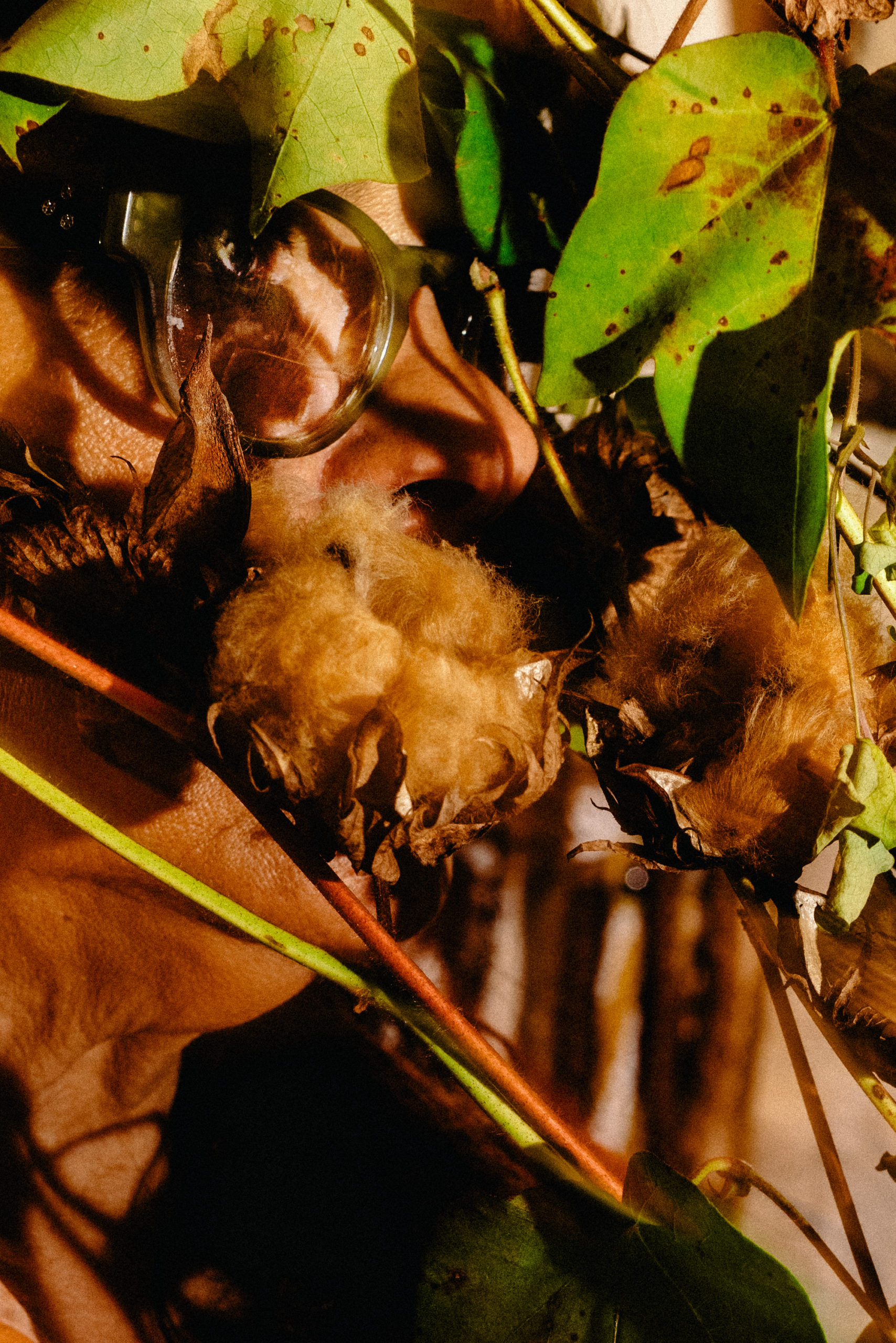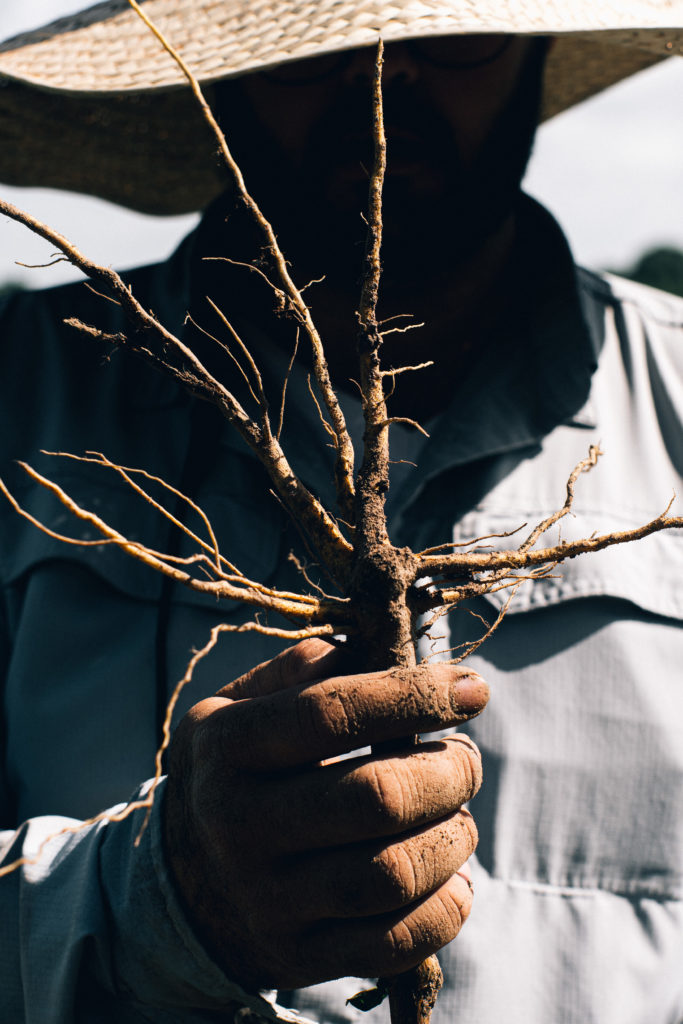
Acadian Brown Cotton
Gossypium herbaceum

Along the vanishing coastline of South Louisiana is a textile tradition re-emerging from the brink of extinction. Along the prairies and wetlands of Acadiana, brown cotton, known in Cajun French as coton jaune, is finding its home again in farms, gardens and wild places. For nearly 200 years, brown cotton served the people of Acadiana as their main source of homespun textiles, but due to the effects of globalization, climate change, and the fast fashion clothing industry, it has almost completely vanished from the collective landscape of the Cajun fields and minds.
The Acadians were exiled from Nova Scotia between 1755-1764 by Great British. Many arrived in southwest Louisiana where they remained almost completely isolated. Upon arriving to new lands, adaptation and resiliency were key components of survival. How brown cotton arrived in this particular part of the country is still up for debate. Like the Acadians, brown cotton is also not indigenous to the area. Through preserving hands, this light and breathable textile found itself a devoted community in a new land they could both call home.
Environmental Philosopher Glenn Albrect defines solastalgia as ‘the homesickness you have when you are still at home’, and extrapolates further by stating that it is ‘the lived experience of negative environmental change’. In both of these definitions, the philosopher observes the collective emotion of a group watching its world decline due to man-made encroachment and exploitation on a massive scale.
As a native of Louisiana, I have also seen my world become less familiar. I have watched my waterways spill over levees, my flora and fauna become choked out by invasive chemicals. How does a community grapple with finding solace in a place it no longer recognizes as its own? In this case, it begins with a single brown cotton seed.
